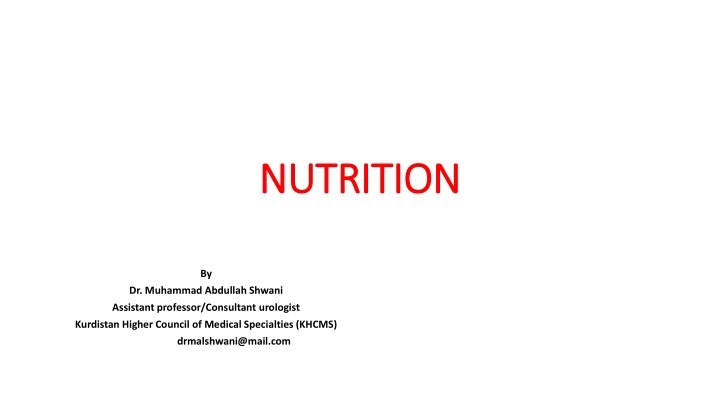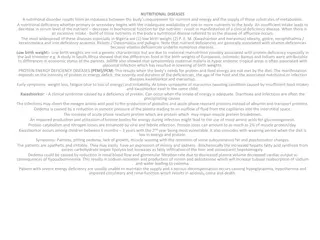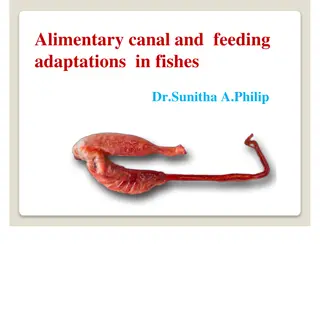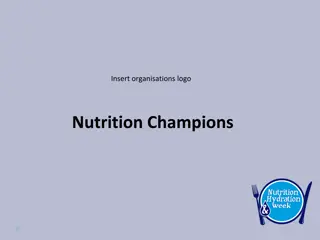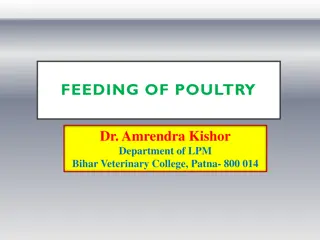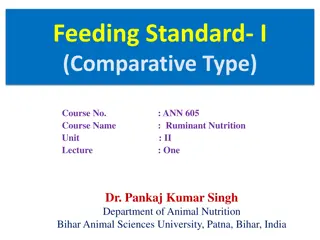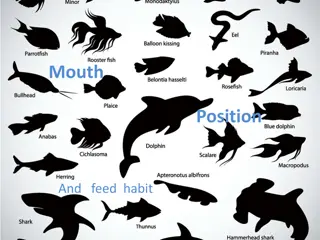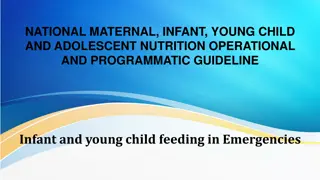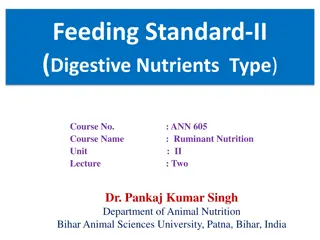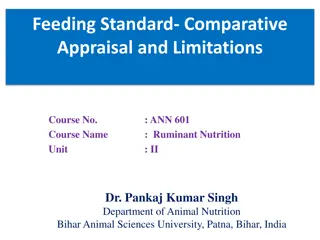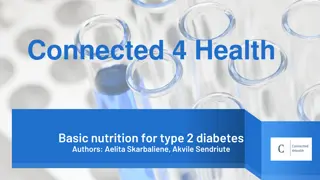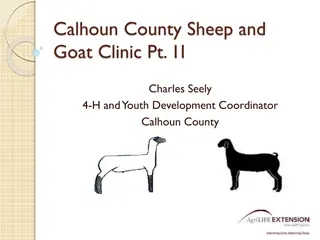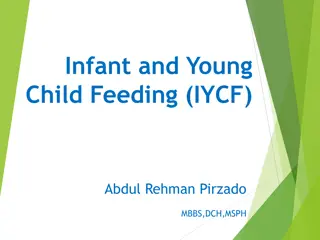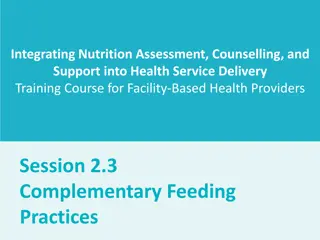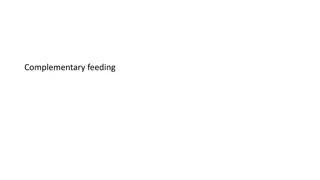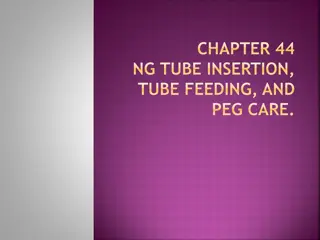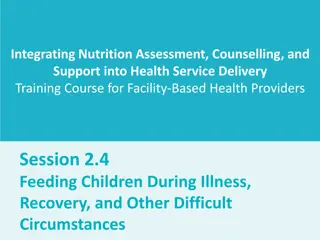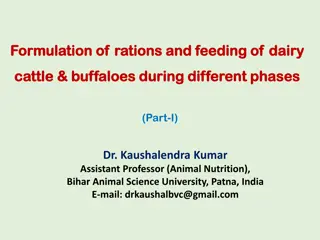Nutritional Requirements and Feeding Methods
This informative content covers essential topics such as caloric requirements, indications for nutritional support, nutritional need assessment, and methods of feeding including enteral and parenteral approaches. Detailed information on caloric values, nutritional assessments, and indications for procedures like gastrostomy are provided.
Download Presentation

Please find below an Image/Link to download the presentation.
The content on the website is provided AS IS for your information and personal use only. It may not be sold, licensed, or shared on other websites without obtaining consent from the author.If you encounter any issues during the download, it is possible that the publisher has removed the file from their server.
You are allowed to download the files provided on this website for personal or commercial use, subject to the condition that they are used lawfully. All files are the property of their respective owners.
The content on the website is provided AS IS for your information and personal use only. It may not be sold, licensed, or shared on other websites without obtaining consent from the author.
E N D
Presentation Transcript
NUTRITION NUTRITION By Dr. Muhammad Abdullah Shwani Assistant professor/Consultant urologist Kurdistan Higher Council of Medical Specialties (KHCMS) drmalshwani@mail.com
Caloric Requirement Caloric Requirement Neonates 100 kcal/kg/day. Adults 40 kcal/kg/day. Adult with catabolism 60 kcal/kg/day. It is given as: Carbohydrates 50%. Fat 30 40%. Protein 10 15%. Caloric values: Carbohydrate 4 kcal/g. Protein 4 kcal/g. Fat 9 kcal/g
Indications for Nutritional Support Indications for Nutritional Support Preoperative nutritional depletion. Postoperative complications: Sepsis, ileus, and fistula. Intestinal fistula: High type wherein output is >500 ml/day. It may be duodenal, biliary, pancreatic, intestinal, etc. Pancreatitis, malabsorption, ulcerative colitis, pyloric stenosis. Anorexia nervosa and intractable vomiting Trauma Multiple, fasciomaxillary, head and neck. Burns. Malignant disease. Renal and liver failure. Massive bowel resection causing small bowel syndrome.
Nutritional need assessment Nutritional need assessment 1. Body weight. 2. Upper arm circumference. 3. Triceps skin fold thickness. 4. Serum albumin. 5. Lymphocyte count. Nutritional requirements: Carbohydrates, fat, proteins, vitamins (includes fat soluble vitamins also), minerals, trace elements.
Methods of Feeding Methods of Feeding A. Enteral. Includes: 1. 2. 3. B. Parenteral. By mouth By Nasogastric tube. BY enterostomy (Gastrostomy and Jejunostomy). ENTERAL: By 1. Mouth: Requires Common sense. Cleanliness. Compassion
2.By nasogastric tube (NG) 2.By nasogastric tube (NG) Tube end in the stomach is confirmed by injecting 5 ml of air down the tube and listening through a stethoscope for its bubbling entry into the stomach.
3.By enterostomy 3.By enterostomy 1. 2. Gastrostomy. Jejunostomy.
GASTROSTOMY GASTROSTOMY Indications : Severe malnutrition. Major surgeries. Severe sepsis. Trauma. Head and neck surgeries. It is done if feeding is required for more than one month.
Types Types 1. Based on duration of use: Temporary. Permanent. 2. Based on lining: Mucus lined (Permanent). Serosal lined (Temporary). 3. Based on technique: By open procedure Percutaneous insertion
Contraindications Contraindications Previous gastric surgeries. Intestinal obstruction. Gastric outlet obstruction
JEJUNOSTOMY JEJUNOSTOMY Jejunostomy for enteral nutrition becoming more popular because of: It s comfort. Easy to do. Can be kept for a long time. Lesser complication than gastrostomy. Indications are the same as gastrostomy.
Types Witzel jejunostomy: The site of placing jejunostomy is 30 cm from duodenojejunal junction. Needle jejunostomy , using a catheter of small gauge.
Complications of enteral feeding Complications of enteral feeding Aspiration. Wound infection and leak. Diarrhea due to rapid feeding or hyperosmolarity. Hyperglycemia. Hypokalemia. Blockage. Nausea and vomiting. Hyperosmolarity. Tube discomfort. Cholestasis.
TOTAL PARENTERAL NUTRITION (TPN) TOTAL PARENTERAL NUTRITION (TPN) About 5% of hospital admissions require TPN. Indications : 1. Failure or contraindication for any enteral nutrition. 2. High output abdominal fistulas Duodenal, biliary, pancreatic. 3. Major abdominal surgeries of liver, pancreas, biliary, colonic. 4. Septicemia. 5. Multiple trauma.
Technique Technique Using a needle and guidewire a subclavian vein catheter is passed just below the clavicle and fixed securely to the skin. TPN is given through a central vein and not through a peripheral vein.
Components used in TPN Components used in TPN 1. Carbohydrates. 2. Fat and amino acids. 3. Vitamins and trace elements. The patient should be monitored at regular intervals with body weight, fluid balance, blood glucose, electrolytes, blood urea, LFT, serum calcium, magnesium, phosphate, etc.
Complications Complications A. Technical: Air embolism Pneumothorax. Bleeding. Catheter displacement, blockage. Infection, sepsis Thrombosis. B. Biochemical: Electrolyte imbalance: hyponatremia, hypokalemia, hypophosphatemia. Hyperosmolarity. Hyperglycemia. Dehydration.
Contraindications Contraindications Cardiac failure. Blood dyscrasias. Altered fat metabolism
